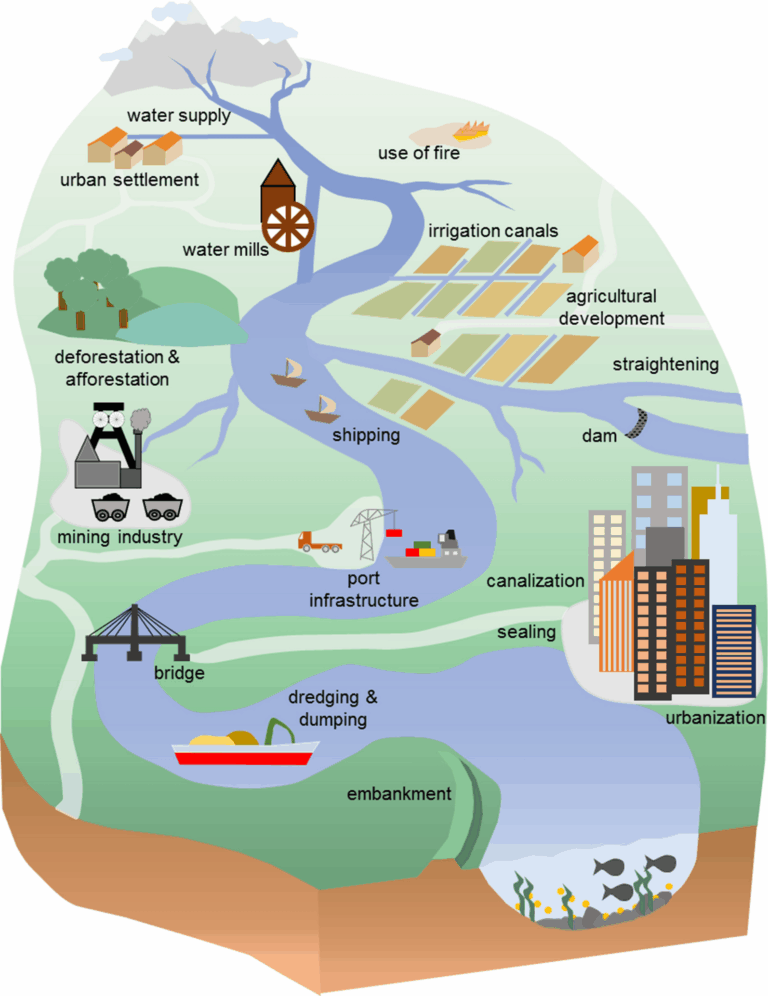Summary of "Hydropower Dams and Fluvial Morphological Impacts—An African Perspective"
Basson GR (2005) discusses the ecological and morphological changes induced by hydropower dams in Africa. The article emphasizes that these dams significantly alter river flow, sediment transport, and local ecosystems, which can lead to adverse effects such as habitat degradation and altered sedimentation patterns.
Key points include:
-
Altered Hydrology: Dams modulate river flows, affecting seasonal variability and disrupting natural hydrological cycles, which impacts both aquatic and terrestrial ecosystems.
-
Sediment Retention: The trapping of sediment behind dams leads to reduced sediment supply downstream, affecting river morphology and leading to issues like riverbed degradation.
-
Biodiversity Loss: Changes in flow and sediment dynamics can threaten local biodiversity, particularly species dependent on specific flow conditions for breeding and feeding.
-
Socioeconomic Impacts: The construction and operation of dams can displace communities, change land use, and affect local economies reliant on natural river systems.
- Sustainability Considerations: The article calls for a balanced approach to dam development that considers ecological integrity and socio-economic factors, advocating for sustainability in hydropower projects.
Overall, the challenges posed by hydropower dams require comprehensive management strategies to mitigate negative impacts and promote ecological health in African river systems.


